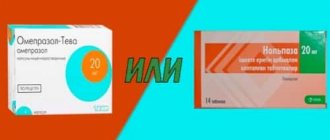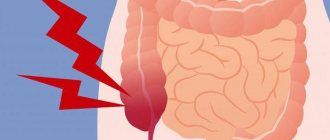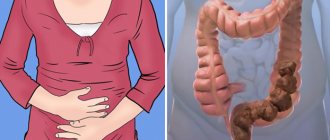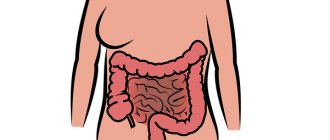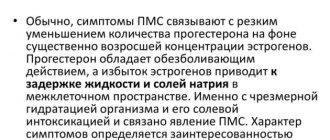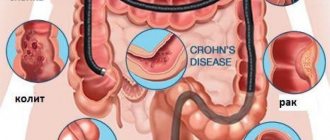Causes of problems with the intestinal mucosa
The intestine is a very important organ, which is especially susceptible to various diseases. The intestinal mucosa becomes inflamed due to a number of factors, which ultimately brings discomfort and pain to a person. Before understanding how to restore the intestinal mucosa, it is necessary to consider the main causes of dysfunction. So, the manifestation of the inflammatory process may appear in the following cases:
- When the gastrointestinal tract is affected by various parasites. In this case, pathogenic organisms attack the intestinal walls, including the mucous membrane. Parasites absorb nutrients, and as a result of their vital activity, they leave behind damage in the form of ulcers.
- When infected with infectious diseases that cause inflammatory processes. These include various viruses, dysentery, E. coli and others.
- In the absence of healthy microflora. Beneficial bacteria (lacto- and bifido-) ensure the normal condition of the intestines, but in their absence, the mucous membrane is subject to disorders and inflammation. The most common reason for the lack of beneficial bacteria in the intestines is the use of antibiotics.
- With an unbalanced diet.
- For problems with blood circulation.
- With genetic predisposition. Often, intestinal problems are inherited.
- For autoimmune diseases.
Due to the influence of the above factors, mucosal cells die off, which is accompanied by inflammation, can cause pain and prevents the intestines from performing their functions normally. Therefore, it is extremely important to recognize the problem in a timely manner, contact a specialist who will recognize the cause and tell you how to restore the intestinal mucosa. It is important to remember that the earlier treatment was started, the less damage will be caused to the body.
Secrets of regeneration of the intestinal mucosa
Increase the amount of digestive enzymes
None of us even think about our digestion until problems start and we experience discomfort, gas, inflammation or even irritable bowel symptoms.
We must remember that the process of digestion begins the very moment we select the food that we then put into our mouth. To protect and strengthen our intestinal mucosa, it is necessary, firstly, that a sufficient amount of digestive enzymes be released.
Thanks to them, the digestion process will go much better and we will help the cells of the intestinal wall to select the nutrients we need, which then enter our blood.
Look out for foods that may help your body produce more digestive enzymes:
- Raw vegetables: celery, broccoli, parsley
- Papaya, very suitable, for example, for people whose pancreas does not produce enough enzymes
- Pineapple, ideal for reducing inflammation
- Kiwi
- Grape
- Honey
Cleanse the intestinal mucosa
The layer of harmful bacteria that adheres to the intestinal lining and prevents us from absorbing nutrients adequately is called a “biofilm.” How to solve this problem? These tips will help you:
- Drink two liters of water a day
- Start your morning with a glass of warm water with lemon juice
- Eat red fruits, naturally, without added sugar
- Drink parsley and dandelion infusions
- Eat whole grains rich in carbohydrates: brown rice, buckwheat, oats
- Add flaxseed to your food, you can sprinkle it on your food
- Eliminate sugar, dyes, sugary drinks and unhealthy fats
- Do some form of physical activity every day: walk, bike, swim
Regenerate the intestinal mucosa
- Add probiotics to your diet: kefir is a great choice.
- Add prebiotics to your diet: They are a type of carbohydrate that our intestines cannot digest, but they have the ability to selectively modify intestinal flora to strengthen it.
You can find them in the following products:
- bananas
- asparagus
- garlic
- tomatoes
- leek
- whole wheat
- artichokes
- onion
- chicory
And in conclusion, we repeat that in order for the intestinal mucosa to be healthy, you should adhere to a healthy lifestyle and eat right.
Thus, we can summarize everything said above in the following points:
- Before you put any product in your mouth, think about whether it is healthy? Just imagine that all these delicious foods, saturated with fat, or any sweet drink of bright color, will turn into toxins inside you that will firmly stick to the intestinal mucosa.
- Take care of your bacterial flora with the right probiotic and prebiotic products.
- Control the use of medications; do not take them if you really do not need them.
- Avoid daily stress.
Stick to an active lifestyle, find time for a set of aerobic exercises. published by econet.ru
PS And remember, just by changing your consciousness, we are changing the world together! © econet
Did you like the article? Write your opinion in the comments. Subscribe to our FB:
How to restore the intestinal mucosa with medications
In order to restore the mucous membrane, official medicine uses drugs that are aimed at increasing cell regeneration. It is important to note that such drugs are prescribed by a gastroenterologist. You should not prescribe medications yourself, since the right choice will determine how effective the treatment will be and whether it will worsen the current situation. A number of medications that help restore the mucous membrane include the following:
Each of the above drugs has a different way of influencing the mucous membrane and is prescribed based on the reason, which negatively affects the person’s condition. Even if the patient may not have obvious signs (pain or discomfort) of a disorder in the intestinal mucosa, the doctor, after examination, may prescribe a drug that will help cope with the disorders at the initial stage.
How to restore the gastric mucosa with atrophic gastritis?
This pathology can only be treated conservatively, there is no point in operating anything, the atrophic areas are located in patches of different areas. Gastroenterologists consider the disease a precancerous condition, but before the cells degenerate into cancer, they can be returned to normal.
Conservative therapy used to treat chronic atrophic gastritis consists of three stages:
- Treatment with medications.
- Proper diet.
- Use of folk remedies.
When minimal atrophic changes occur with small foci, treatment of atrophic gastritis does not cause difficulties. If a person seeks help late, a stage of diffuse atrophy occurs: in this case, it is possible to restore some areas and prevent the progression of the disease.
In order not to provoke ulcerative-erosive pathology, precautions should be taken; an overdose of drugs has a detrimental effect and contributes to complications.
Drug therapy for mucosal atrophy
Focal atrophic gastritis or diffuse atrophy should be treated in the same way:
- Medicines are used that activate the movement of the food bolus from the stomach cavity into the intestinal canal. These medications help combat nausea.
- If acidity decreases noticeably, products with natural gastric juice are used.
- A decrease in the level of hydrochloric acid suppresses the synthesis of pancreatic enzymes - synthetic enzymes are used in tablets.
Since the digestion process is disrupted, the food lump is poorly digested, and the body experiences a lack of vitamins and microelements. The decrease in the amount of folic acid and vitamin B12 is especially noticeable, so hemoglobin decreases. To correct this condition, vitamin complexes , cyanocobalamin and folic acid as separate agents.
Drugs that restore the gastric mucosa
How to restore the gastric mucosa? To restore the mucous membrane, the gastroenterologist selects medications for each patient individually. The components of the drugs will speed up regeneration processes and promote better blood supply to the organ.
For regeneration the following is prescribed:
- Cytotec - the drug has a gastroprotective effect, increases the formation of protective mucus, enhances blood circulation of the mucous epithelium;
- Misoprostol is a synthetic derivative of prostaglandins, increases the contractility of smooth muscles, regulates the production of gastric juice, and has a weak antiulcer effect;
- Lansoprazole - capsules suppress gastric secrecy, promote the formation of specific immunoglobulins for Helicobacter pylori flora, and inhibit its bacterial growth. Analogs: Epicurus , Lanzal , Lansofed ;
- Omeprazole - available in capsules, has active antiulcer properties. Suppresses the production of hydrochloric acid, reduces the total volume of gastric juice, and has a gastroprotective effect;
- Lactobacterin – contains acidophilic lactobacilli and is active against a wide range of pathogenic bacteria. Normalizes digestion, improves metabolism, restores local immunity. Analogs: Acylact , Lactonorm , Biobakton ;
- Bifiform - is used when the balance of microflora is disturbed due to the use of antibiotics and other medications. Eliminates dysbiosis, restores and forms intestinal flora.
Additionally, the following drugs may be prescribed to restore the gastric mucosa:
- Cimed – contains copper and zinc, used for deficiency of elements that are necessary to relieve inflammation. The main effect is immuno-strengthening;
- Regesol - used as a dietary supplement, the drug is rich in multivitamins. Contains sea buckthorn, nettle, mint, licorice, plantain, calendula. The composition contains B1, B2, B6, PP, E, K, C, panthenolic acid, tocopherol, flavonoids and other components.
- Venter - heals peptic ulcers, prevents the development of peptic ulcers, protects the mucous membrane from the aggressive effects of HCl and pepsin.
How to restore the intestinal mucosa with folk remedies
As a supplement to the therapy prescribed by a specialist, you can also use folk remedies that will help speed up the restoration of the mucous membrane. Natural remedies are a source of useful substances, so their use will help get rid of unpleasant intestinal problems as quickly as possible and help normalize the functioning of the mucous membrane. Such folk remedies include:
- Celandine. This plant will perfectly help with hyperplastic processes and mucosal atrophy. Celandine should be consumed in the form of a whey infusion, which is prepared as follows: 65 grams of sugar are diluted in 1 liter of whey, and then a gauze bag with dried celandine is placed. The infusion should be left for a day in a dark place at room temperature, and then consumed for 2 weeks after meals, 3 times a day, 50-100 milliliters.
- Sea buckthorn oil. This is a wonderful remedy that allows you to restore the cells of the intestinal and stomach mucosa.
- Natural juices of cabbage, beets, carrots and radishes. These products perfectly help restore the functioning of the intestinal mucosa. However, in some cases, you should avoid drinking cabbage juice. A gastroenterologist will help you determine for sure which juice is best to drink.
- With high acidity, flax seeds help well, and with low acidity, infusions of plantain and parsley root help.
- During the restoration of the intestinal mucosa after a burn, Vaseline oil may be prescribed.
How to deal with flatulence and flatulence?
Flatulence is the most common intestinal pathology, which can be a consequence of poor nutrition, stressful situations or chronic diseases of the digestive system. With flatulence, gas bubbles form in the intestines, the movement of which causes painful spasms and cramping pain in the lower abdomen. Flatulence is often accompanied by flatulence - the involuntary release of gases with a characteristic smell and sound. For treatment, the patient is prescribed a diet that excludes foods containing large amounts of purines or puric acid. These are cabbage (red and cauliflower contain the least amount of purine), kvass, yeast, legumes, and carbonated drinks.
Flatulence - what is it?
To relieve painful symptoms without the use of medications, you can use one of the recipes below.
Herbal drink with flax seeds
Flaxseed is one of the best foods to safely heal your gut at home. During evaporation, flax seeds form a lot of mucus, which envelops the walls of the large and small intestines and protects them from the effects of bolus components, toxins and dry feces. Herbs soothe mucous membranes and help get rid of discomfort and discomfort.
To prepare a medicinal drink, you need:
- in a glass jar in equal proportions (about 1 spoon each) mix lemon balm, flaxseed, St. John's wort and chamomile;
- add half a liter of boiling water and stir;
- cover with a lid, wrap in a towel and leave for an hour.
The drink should be prepared in the morning. The resulting amount should be divided into 3-4 doses and taken throughout the day 15 minutes before meals. Duration of therapy is from 2 to 4 weeks.
Preparing a decoction of flax seeds
Burnet decoction
Burnet is a medicinal plant, widespread in countries with temperate climates. Infusions and decoctions of burnet have an astringent and hemostatic effect, so they can also be used for the complex treatment of hemorrhoids in the form of compresses and lotions. This decoction is also useful for chronic intestinal infections, since when used internally it has an antimicrobial and bactericidal effect.
For treatment to be effective, the medicine must be prepared correctly. To do this you need:
- Grind 400 g of dried burnet and place in a shallow pan (it is better to use the rhizome - it contains the maximum amount of mucus and tannins);
- add 300 ml of boiling water and put on low heat;
- cook for at least 15 minutes, stirring occasionally.
You need to drink the decoction 2 times a day, 1 glass. You can take the product after meals or between meals. For flatulence, the duration of treatment is 3 weeks.
Diet for mucosal restoration
It is extremely important to regulate nutrition during recovery, since its quality will determine how quickly the problem can be overcome. There are several basic rules:
- It is necessary to exclude alcohol, fatty, spicy, fried foods.
- You should take a large amount of fermented milk products.
- It is important to eat as many plant foods as possible and as few animal products as possible.
- It is necessary to provide gentle nutrition - food should be warm, but not hot, not too salty, pepper and other seasonings should be excluded, food should be mushy or liquid.
- It is necessary to reduce the consumption of flour and sweet products to a minimum.
Doctors' advice
Gastroenterologists recommend adjusting your lifestyle and diet when restoring the intestinal mucosa. First of all, it is necessary to exclude foods that can act as intestinal irritants - alcohol, fatty meats, fried foods, etc.
It is important to drink plenty of clean water. It is best to opt for still mineral water at the time of recovery.
It is necessary to adhere to the prescribed diet and try to eat food at the same time. In addition to actions related to nutrition, it is important to pay attention to lifestyle. You should get into the habit of playing sports, doing gymnastics, or at least devoting 1-2 hours a day to walks in the fresh air.
Traditional methods of restoring the intestinal mucosa
There are many different methods of treating internal organs using traditional medicine. Among them are several effective methods in the fight to cleanse the intestines.
Decoction of oats and yogurt
To restore the intestinal mucosa, you can take a decoction of oats
0.5 cups of oat grains are poured with 250 ml of purified water and kept for half an hour under steaming conditions in a water bath. After cooling and straining, the finished broth is consumed before meals in a dosage of 1 tbsp. spoons 3 times during the day.
To enhance the effect, it is recommended to take bran, which serves as a natural cleaner from harmful substances, as well as flax seeds, which have an absorbent and disinfectant effect on the walls of the inflamed organ.
After using this technique for two weeks, you should begin the next phase, the goal of which is to fill the intestines with beneficial bacteria.
For this, fermented milk products such as yogurt, kefir, and probiotics are used. The final stage of the cleansing procedure is maintaining a healthy lifestyle and a nutritious diet.
Beetroot
Beetroot restores proper bowel function
Beets are a popular natural remedy for restoring normal bowel function.
The duration of the cleansing course is 1-2 weeks, during which it is recommended to consume 180 ml of freshly squeezed vegetable juice per day, previously kept in the refrigerator for 30 minutes.
It is allowed to take natural medicine with the addition of bee honey, diluted with purified water. During the therapeutic cycle to restore proper bowel function, it is advisable to use boiled beetroot salads with various beneficial ingredients, as well as the drug Enterosgel, in the diet. The final stage of cleansing is the use of probiotics to restore microflora.
Restoring the gastric mucosa with folk remedies
Many people ask questions about how to restore the intestinal mucosa using folk remedies, how to restore the gastric mucosa using folk remedies. Traditional medicine helps to effectively regenerate the mucous epithelium. Use flaxseed decoction , potato juice , infusion of parsley root .
It has a healing effect with ok from plantain leaves , which is used 20 minutes before meals several times a day, diluted in boiled water.
Medicinal tea
The inner layer is well restored after drinking herbal tea . The collection can be purchased at a pharmacy or prepared independently. You should take 10 g of marshmallow rhizome , St. John's wort leaves , and chamomile flowers .
The herbs are placed in a glass container and poured with a glass of boiling water. The collection must be heated in a water bath for 25-30 minutes. Then the mixture should be allowed to cool, strain, and squeeze. The resulting decoction is diluted with water and drunk half a glass 4 times before meals.
Flax seed jelly
To prepare the drink, you need a deep bowl or a blender with a large glass. 3 tbsp flaxseed is poured into the container. l., pour 1 liter of boiling water, then beat the mixture for 10 minutes. At the end of beating, add a little condensed chicory. This jelly should be drunk warm 30 minutes before a meal; honey can be added if desired.
Restoring normal functioning of the large intestine
To achieve improved gut health, there are certain effective guidelines that should be followed, which include:
- Diet food. Avoid the use of products that enhance the processes of fermentation and decay, as well as provoke inflammation of the organ mucosa with a high content of acid, salt, spicy and fried food components.
- Cleansing enemas with antiseptic effect. Helps eliminate edema, hyperemia, and neutralize pathogenic microbes. For these purposes, a decoction of chamomile, sage, and calendula is used. Microclysters with sea buckthorn oil have a healing effect.
- Motor activity. If inflammation develops in the intestines, it is not recommended to stay in a sitting position for a long time. Regular lack of body movements leads to stagnation in the large intestine, causing a decrease in blood flow, impairing motility. As a result, constant constipation occurs, as well as intoxication of the body due to fecal deposits. To achieve increased tone and improved blood circulation, it is necessary to resort to simple strength exercises, including physical exercise and walking.
- Use of medicines. Allowed only as prescribed by a doctor after diagnosis of the disease.
Therapeutic actions
To restore the intestinal mucosa, it is necessary to normalize the microflora with the help of probiotics
Drug treatment that helps eliminate inflammation of the intestinal mucosa consists of a list of different groups of drugs:
- antibacterial - help cope with the pathological process;
- adsorbent - remove harmful substances from the body;
- antispasmodic - relieve spasms;
- painkillers - when pain occurs;
- antiemetics - relieve nausea and vomiting syndrome;
- enzymes - improve food absorption;
- probiotics - help restore normal microflora.
Leading an unhealthy lifestyle, not following a healthy nutritional diet, and taking certain potent medications increases the risk of disturbances in the functioning of the digestive system.
Resumption of normal intestinal activity, including restoration of the mucous membrane, is possible through the use of drug therapy, traditional methods of treatment, and diet.
Products that restore the intestinal mucosa
Proper nutrition is the key to good bowel function
In achieving effectiveness in improving bowel function, proper nutrition is of great importance.
At the same time, you should include in your daily menu food elements that help normalize microflora, such as kefir, yogurt, symbiter, narine, as well as prebiotics that activate the growth of beneficial bacteria. They are contained in the following products:
- bananas;
- chicory;
- asparagus;
- Rye bread;
- Jerusalem artichoke;
- garlic;
- beet;
- tomatoes;
- oats;
- leek;
- dandelion leaves;
- bran;
- sauerkraut;
- artichoke;
- barley;
- onion;
- beans.
Additional tips and tricks
For intestinal treatment with folk remedies to be effective, it must be combined with the prescribed diet. If the patient makes mistakes in nutrition, the likelihood of relapses due to inflammatory processes in the mucous membranes will be quite high. It is recommended to exclude from the diet foods that cause increased gas formation, spices, smoked foods, and pickled foods . It is better to prepare food by baking, stewing or boiling. During periods of exacerbation of inflammatory processes, restriction of salt and sugar is indicated. In order not to injure the mucous membrane, it is worth observing the temperature regime for food intake: it should not be cold or too hot.
Nutrition for bowel treatment
To prevent recurrent helminthiasis, you should follow the rules of hygiene and heat treatment of products, especially eggs and meat. For constipation, an active physical regimen and an increase in the diet of foods rich in coarse plant fibers are recommended (only if the patient does not suffer from intestinal colitis). Compliance with the drinking regime is of great importance: the amount of liquid drunk per day should not be less than 1.5 liters.
Video - Treatment and cleansing of the intestines at home
Restoration of the colon mucosa
When stagnant processes occur in the large intestine, the condition of the entire organism is jeopardized, as it becomes easily vulnerable. The negative impact of pathogenic bacteria causes a number of unpleasant manifestations and symptoms, such as:
- fermentation;
- stool disorder;
- flatulence;
- skin rashes;
- belching;
- hair loss;
- bloating;
- bad breath;
- failures in the metabolic system;
- anemia;
- state of apathy;
- excessive fatigue;
- decreased immune strength.
In some cases, severe intestinal slagging occurs, requiring cycles of therapeutic manipulations. Among them:
- Herbal decoction in combination with products with a laxative effect. An infusion of chamomile or calendula in a dosage of 400 g at a time will have a stimulating effect on the release of bile and will provoke an improvement in colon emptying.
- Vegetable oil (olive, flaxseed, sunflower, castor, corn) It is recommended to use it in the morning on an empty stomach in combination with flaxseed infusion, using the product in the amount of 1 tbsp. spoons before meals.
- Cleansing enemas. For filling, purified boiled water and decoctions of anti-inflammatory medicinal herbs are used. The therapeutic course involves the use of 3-5 infusions throughout the day, achieving a feeling of complete relief.
- Colon hydrotherapy. A common method of washing all parts of the colon, performed using a special apparatus and a large volume of water, as well as certain solutions. The cleaning process takes place under the supervision of a specialist and viewed on a computer monitor. This method is carried out only in conditions of stay in specialized medical institutions. It helps eliminate solid deposits, including fine particles and compacted sediment. Treatment is carried out in stages, with gradual penetration of fluid into various parts of the intestine. For complete cleansing, 10 treatment sessions are required.
- Saline solution. To prepare the product, you need to dissolve 1 tbsp. a spoonful of table salt in 1 liter of water. In the morning, take 400 ml of the resulting mixture on an empty stomach, and then drink another 2 liters of solution over the course of several hours. Throughout the entire procedure, you should perform feasible physical exercises. The result of cleaning is the emptying of clean liquid, without any residues or impurities.
To achieve a successful result in restoring the intestinal mucosa, it is advisable to carry out therapeutic actions on this issue under medical supervision. Traditional methods are used as additional manipulations to drug treatments.
You can learn about restoring the functioning of the gastrointestinal tract from the video:
Noticed a mistake? Select it and press Ctrl+Enter to let us know.
The overall health of the body depends on the condition of the intestines. Proper digestion of food consumed, effective and maximum extraction of beneficial nutrients, timely elimination of residues and toxins are the key to health and active functioning of the body.
Antibacterial and other potent medications, an unhealthy lifestyle, and poor diet can negatively affect the intestinal mucosa and cause disruption of the digestive tract. You can speed up recovery with the help of medications, folk remedies, and proper nutrition.
Role in the body
The main cause of most diseases of the gastrointestinal tract is inflammation of the intestinal mucosa. It manifests itself in disruption of the processes of assimilation of valuable nutrients that the body receives with food. This is a perfectly streamlined and quite complex process.
For the gastrointestinal system to function normally, it is necessary that the intestinal cells and its mucous membrane are in ideal condition. Then they will be able to send the maximum amount of nutrients into the bloodstream and retain toxins.
When the intestinal mucosa is inflamed, susceptible to disease, and saturated with toxins, bacteria and other harmful substances can enter the bloodstream. Therefore, it is especially important that the mucous membrane of the intestines and stomach functions normally and is healthy.
Learn to manage stress
You can argue long and hard about the fact that modern life is saturated with stress and there is no escape from it. But what's the point if, firstly, stress has really become an integral part of life, and secondly, it undermines health. There is a problem - you need to find a solution.
Try to get in touch with stress. In other words, tame it, learn to control it. There are now all the resources for this: massage, meditation, yoga, breathing techniques, hydrotherapy. At least take a warm bath with sea salt in the evening, surrounded by candles.
The main thing is not to lead to serious conditions, when no bath will help, you will need a psychologist. Don’t put off relaxing practices until tomorrow: tension in the body will accumulate and eventually grow to the scale of a huge snowball. Work on yourself a little bit, but every day (15-20 minutes). And you will see positive changes.
You probably don’t need to be reminded about the relationship between your emotional state and the health of your gastrointestinal tract. The more adrenaline and cortisol—the “stress hormones”—in your body, the higher your chances of inflammation, increased pathogens, and gut damage.
Cause of intestinal inflammation
The intestinal mucosa can be damaged as a result of various diseases, when taking potent drugs and poor nutrition. The disease practically does not manifest itself. The patient may experience stool retention, pain and discomfort in the gastrointestinal tract. At the same time, restoration of the mucous membrane is a long process and takes more than one month.
If you have the above symptoms, you should visit a gastroenterologist. He will examine the pancreas, stomach and other digestive organs to rule out possible causes of discomfort. Tests should be taken to identify the underlying disease. Treatment should be prescribed by a specialist.
Be attentive to your health and if symptoms of the disease appear, do not delay your visit to the doctor. Bowel cancer is a common disease.
How does the mucous membrane recover?
Let's look at how to restore the intestinal mucosa and effectively get rid of discomfort. All known methods that guarantee recovery boil down to the following points:
- Cleansing from harmful bacteria, toxins, allergens and undigested food residues.
- Colonization of the intestinal and stomach mucosa with beneficial digestive bacteria that have a beneficial effect on the microflora.
- The healing process of damaged mucosa.
Increased digestive enzymes
Every person should remember the intestines not only when there is a feeling of discomfort, inflammation, gases and pain in the gastrointestinal tract. To protect against harmful substances and strengthen the mucous membrane, you should follow a few simple rules every day.
Along with food, the body should receive products that will help the body secrete the maximum amount of valuable digestive enzymes. These include raw vegetables: broccoli, parsley, celery. It is recommended to constantly consume honey and fruits: kiwi, papaya, grapes, pineapple. Papaya is indicated if the pancreas is not able to produce enough enzymes. Pineapple effectively reduces mucosal inflammation.
Signs of small intestinal pathology
The intestines are capable of constantly renewing themselves - its lining is renewed every 24 hours, which allows us to avoid many troubles: if some harmful substance enters the body with food or medicine, the intestines do its best to get rid of it as soon as possible and renew its internal surface so that no traces of harmful effects remain. But if the harmful effects are very strong, the intestines may not be able to cope with timely cleansing and may react with vomiting or disruption of their work, such as acute diarrhea. These are signs of acute intestinal pathology, and they also include acute, prolonged abdominal pain.
Attention: if severe abdominal pain is not relieved by vomiting or lasts more than four hours, you should immediately call emergency care, as this may be a sign of acute pathologies requiring immediate surgical intervention.
Signs of other, non-life-threatening, but still very unpleasant pathological conditions: Bloating, short-term not very strong abdominal pain, pain when pressing in the lower back, increased gas formation, nausea. There may be both constipation and diarrhea. These symptoms often occur in connection with anxiety, tension and are signs of intestinal dyskinesia, and sometimes enteritis - inflammation of the mucous membrane of the small intestine. If there is stagnation in the intestines, then signs of self-poisoning and slagging of the body may be observed. These are increased fatigue, nervousness, brittle nails and hair, pale and dry skin, and a tendency to form acne. All this suggests that the intestines are not coping with their function of digesting and absorbing food. To return normal functions to the intestines, visceral therapy is simply irreplaceable, and periodic cleansing is also necessary.
Contraindications to visceral therapy in the small intestine: acute appendicitis and other acute pathologies of the abdominal cavity requiring surgical intervention; pregnancy, cancer, myelopathy, diarrhea; acute tuberculosis; acute hepatitis; bleeding, high body temperature; heart failure, post-infarction period, postoperative conditions.
Indications for visceral therapy: constipation, enteritis (not in the acute stage), cramps, bloating, abdominal pain after lifting weights, intestinal displacement (to determine the position of the intestines, lying on your back, the navel area is felt using the index and middle fingers of the right hand : with a normal position of the intestine, the pulse beat is palpable to the left of the navel, with displacement of the intestine - to the right).
Daily cleansing of mucous membranes
A layer of harmful bacteria that accumulates on the intestinal and stomach mucosa prevents the body from properly absorbing valuable nutrients. This layer is called "biofilm". To systematically remove the film from the intestinal walls, you need to:
- Drink 2 liters of water every day;
- Start the morning with a glass of warm purified water with the addition of lemon juice;
- Eat red fruits, without added sugar;
- Periodically drink infusions of dandelion and parsley;
- Eat carbohydrate-rich whole grains: oats, buckwheat, brown rice and others;
- Add flax seed to food;
- Eliminate sugar, sweet drinks, unhealthy fats, and dyes from your daily diet;
- Practice a physically active lifestyle: play sports, walk in the fresh air, swim, ride a bike.
Diet during treatment
All stomach diseases are caused by unhealthy diet. During the treatment period, you need to avoid salty, smoked and fried foods. Fresh vegetables and fruits are also prohibited. It is necessary to give up alcohol and smoking, since the harmful substances of alcoholic beverages and nicotine destroy the integrity of the mucous membrane.
Authorized Products
The diet depends on the exact diagnosis, acid levels and other indicators. Nutrition recommendations are prescribed by a doctor or nutritionist.
List of permitted products:
- Soups. You can eat vegetable broths, borscht, and rice broth. You can puree vegetables and add vegetable oils. Strictly in case of exacerbation, you need to avoid meat additives and cream.
- Meat and fish. It is recommended to eat lean white varieties. Pike perch, flounder, pollock and other cod are allowed. The fish is steamed or boiled. As for meat, you can include chicken, turkey and lean veal in your diet.
- Cereals. Almost all types are allowed. Oatmeal is especially useful for patients. Buckwheat, rice and semolina are also included in the diet.
- Flour products. Only rye bread is on the permitted list. You can eat wheat bread, but only yesterday's bread. Also included in the permitted list are crackers and drying products.
- Vegetables. Recommended types: broccoli, zucchini, potatoes, pumpkin, cauliflower and cucumbers. All vegetables must undergo heat treatment. Cucumbers can be eaten fresh if you first remove the peel and wipe them.
- Fruits. Their number should be reduced in the diet. You can include bananas, apples, raspberries, cherries and watermelons in your diet. Berry fruit drinks are allowed.
- Dairy products. It is better to avoid whole milk or reduce its amount. Fermented milk products are allowed, prohibited only in case of hyperacid type of inflammation. You can include cottage cheese casseroles in your diet.
- Beverages. Here it is important to observe not only the composition, but also the thermal regime. Drinks should not be cold or hot. You can drink herbal teas, rosehip infusion, mint and chamomile infusions, natural juices from permitted fruits and vegetables.
You cannot mix products of plant and animal origin. Calculation of proteins, fats and carbohydrates is done individually according to the patient’s weight, height, and age.
Prohibited Products
It is important to prevent weight loss if you have gastritis. Such a violation can provoke an exacerbation of the condition. For any diseases of the gastrointestinal tract there is a universal list of prohibitions.
What not to eat:
- spicy and salty dishes;
- any types of mushrooms;
- canned foods;
- smoked meats and sausages;
- pickled dishes;
- strong coffee and tea;
- alcohol;
- sparkling water;
- store-bought kvass;
- ice cream;
- candies and chocolate;
- fast food;
- semi-finished products;
- fried foods.
You should also avoid hot spices and seasonings with flavor enhancers. Multi-component dishes are also prohibited; mixing plant and animal products is prohibited. The grains on the forbidden list include wheat porridge, and the vegetables include spinach, onions, garlic, turnips and sorrel.
Cleansing with Enterosgel
The advantages of cleansing the intestines and stomach with Enterosgel are undeniable:
- The product is completely safe even with long-term use;
- The drug thoroughly and maximally removes poisons and toxins.
During the treatment process, Enterosgel does not damage beneficial microflora and does not wash minerals and vitamins out of the body.
You need to take the drug Enterosgel 1.5 tbsp. spoon 3 times a day. The full course of cleansing is 2 weeks.
After taking a course of Enterosgel, beneficial intestinal bacteria actively multiply in the body. Taking pharmaceutical probiotics will speed up the process. After a course of cleansing and restoration of the intestines and stomach with the help of Enterosgel, nausea, skin rashes, stool disorders, allergic reactions disappear, and sometimes excess weight is reduced.
Chronic colitis: how to cure at home?
Chronic intestinal colitis is one of the most common complications of diseases of the digestive system. The pathology is characterized by inflammation of the intestinal mucosa of various etiologies. Chronic inflammation often occurs due to poor diet and alcohol abuse, as well as smoking. For treatment, the patient is prescribed a special diet and symptomatic therapy medications. At home, you can reduce inflammation and speed up the healing of the mucous membrane using the following methods.
Symptoms of intestinal colitis
Mint infusion with eucalyptus
The product has pronounced bactericidal, antiseptic and reparative properties. Eucalyptus oil also has an immunomodulatory effect and improves local and systemic immunity. Preparing an infusion of mint and eucalyptus is simple:
- Mix 2 tablespoons of peppermint with 1 tablespoon of dill seeds (can be replaced with fennel);
- add 350 ml of boiling water, stir;
- add 10-15 drops of eucalyptus essential oil to the water and cover with a lid.
Mint infusion with eucalyptus
The product should be infused in a warm place for 2 hours. If you don’t have eucalyptus oil at home, you can replace it with oils with similar properties, for example, cedar, juniper or fir oil. The infusion should be taken 50 ml 4 times a day. For maximum effectiveness, it is better to do this 30 minutes before meals. The duration of treatment is usually 30 days.
Plantain infusion
Plantain infusion will help cope with colitis caused by regular dietary errors. It perfectly removes cramps, reduces the intensity of pain and helps reduce bloating and heaviness in the stomach. With long-term use, plantain infusion helps improve bowel movements and eliminate chronic constipation. The product is prepared according to the following recipe:
- Mix 2 tablespoons of crushed dried plantain with a teaspoon of calamus rhizome;
- put the mixture in a thermos and add 500 ml of boiling water;
- leave in a warm place (can be under a towel to keep warm) for 4 hours.
You need to take the infusion 2-3 times a day. For severe intestinal spasms and increased gas discharge, the single dosage is 80 ml; in all other cases, the single dosage is 50 ml of infusion. The duration of treatment is at least 14 days.
How to restore bowel function: folk recipes
Restoration is effective using oats and yogurt. It is necessary to boil oats: 3 tbsp. l. The grains are poured with water 1:2, heated for half an hour in a water bath and drained. A decoction of 30 ml is taken three times a day, half an hour before meals. Flax seeds and bran, which work as a natural sorbent, will help enhance the cleansing effect of oat decoction.
2 weeks after cleansing the mucous membrane with oat decoction, you can move on to the next stage: colonizing the intestines with beneficial microflora. Homemade fermented milk products will help with this: yogurt, kefir. Pharmaceutical probiotics are also effective. The final stage is proper nutrition, a healthy and rational lifestyle, and the elimination of bad habits.
Small bowel therapy
This procedure should be carried out either an hour before meals or 2-3 hours after it. First, create a positive emotional state. You need to lie on your back, relax and tune in to working with the intestines - concentrate on the abdominal area, it doesn’t matter if you don’t know exactly what the intestines look like - you can imagine it as a “tangle” of intestines. Imagine that the intestines begin to move, pulsate, become active, mobile. Bend your knees - this makes it easier to relax your stomach. Start pressing on the right side of the abdomen, under the stomach - where the duodenum is located. Pressure is performed with four fingers folded together towards the navel and deep into the abdomen. The pressure applied is small. If pain appears, stop the pressure and hold your hand, without releasing the Pressure, until the pain stops. Then continue pressure towards the navel until the next appearance of pain. Pause the movement deeper again - resume when the pain stops, and continue until the next appearance of pain. Do this until the pain completely disappears, but no more than three minutes. Next, press the area around the navel with your fist or fingers. You don’t need to press too hard and gently vertically. If pain appears, do not deepen your fingers, but do not ease the pressure, waiting until the pain stops. All pushing should take no more than five minutes. It is best to carry out this pressing daily for ten days, then take a break for ten days and repeat. There is no need to do pressing constantly, every day without breaks; in addition, if you overdo it, you can reduce the therapeutic effect of the procedure: the body gets used to it and stops responding properly.
Herbal medicine for small intestinal health
In order for the small intestine to function normally, it must be cleansed periodically. Herbal cleansing will be a good addition to visceral therapy.
In parallel with the pressing procedures, it is very useful to drink decoctions of chamomile and licorice root for a week to ten days. This will help cleanse the mucous membranes of the small intestine and relieve inflammation.
• For enteritis - inflammation of the small intestine, intestinal spasms, digestive disorders, intestinal atony, cumin infusion will help: two tablespoons of cumin fruits should be poured into 0.5 liters of boiling water and left in a thermos for three hours, then strain and drink half a glass 2-3 times a day. day after eating.
• In case of food poisoning, inflammatory diseases of the intestinal mucosa, it is recommended to take an infusion of flax seeds: uncrushed seeds should be poured with boiling water in a ratio of 1:30, shaken for 15 minutes, strain, squeeze out the remainder into the infusion, drink a quarter glass 3-4 times a day a day half an hour before meals for two to three weeks. Flax seed has an enveloping effect, which allows the mucous membrane to recover, relieve irritation and inflammation; this remedy is also a mild laxative.
• To restore intestinal motor function, an infusion of fennel fruits is useful: pour 2 tablespoons of mashed fruits into 0.5 liters of boiling water, leave in a thermos for an hour, strain, drink half a glass half an hour before meals 4 times a day. This remedy improves digestion, relieves spasms and inflammation of the intestines.
Exercise for the small intestine
A yoga exercise called “Stork Pose” has a beneficial effect on the small intestine. It is performed like this: you need to stand straight, legs together, raise your arms up, inhale and lean back slightly, then, as you exhale, slowly bend forward, trying to reach your toes with your fingers without bending your legs. This may not work out the first time, but with practice you will definitely achieve the desired result. When you can easily reach your toes with your fingers, you need to move on to the next stage of mastering the exercise - try, standing in a bent position and holding your toes with your hands, press your face to your knees. After holding this position for a few seconds, you need to straighten up and return to the starting position. Repeat six times. Exercise stimulates the digestive organs, provides increased blood flow to the intestines, as a result of which it returns to its activity, begins to produce digestive juices, i.e., to function normally.
Advice from traditional healers
• For pain, inflammation, and bloating, a compress on the stomach is recommended: dilute a quarter glass of table vinegar in one and a half liters of water, moisten a piece of cotton cloth, apply it to the stomach, cover it with cellophane on top and wrap it, keep it for an hour and a half. This is done every other day for two weeks.
• To improve intestinal function, and especially for the prevention and treatment of ulcers, you need to chew a small piece of propolis every day for a month, preferably on an empty stomach. It is also believed that this remedy significantly increases internal strength and psychological stability (while you chew propolis).
• Figs help with inflammatory bowel diseases; you can eat them raw or boil them in milk.
• For bloating, sluggishness of the digestive process, inflammatory bowel disease, gastroenteritis, you need to drink clay water: dilute one teaspoon of white clay, crushed into powder and dried in the sun, in a glass of water, you can add a little honey there. Drink a glass 2 times a day, course - 21 days.
